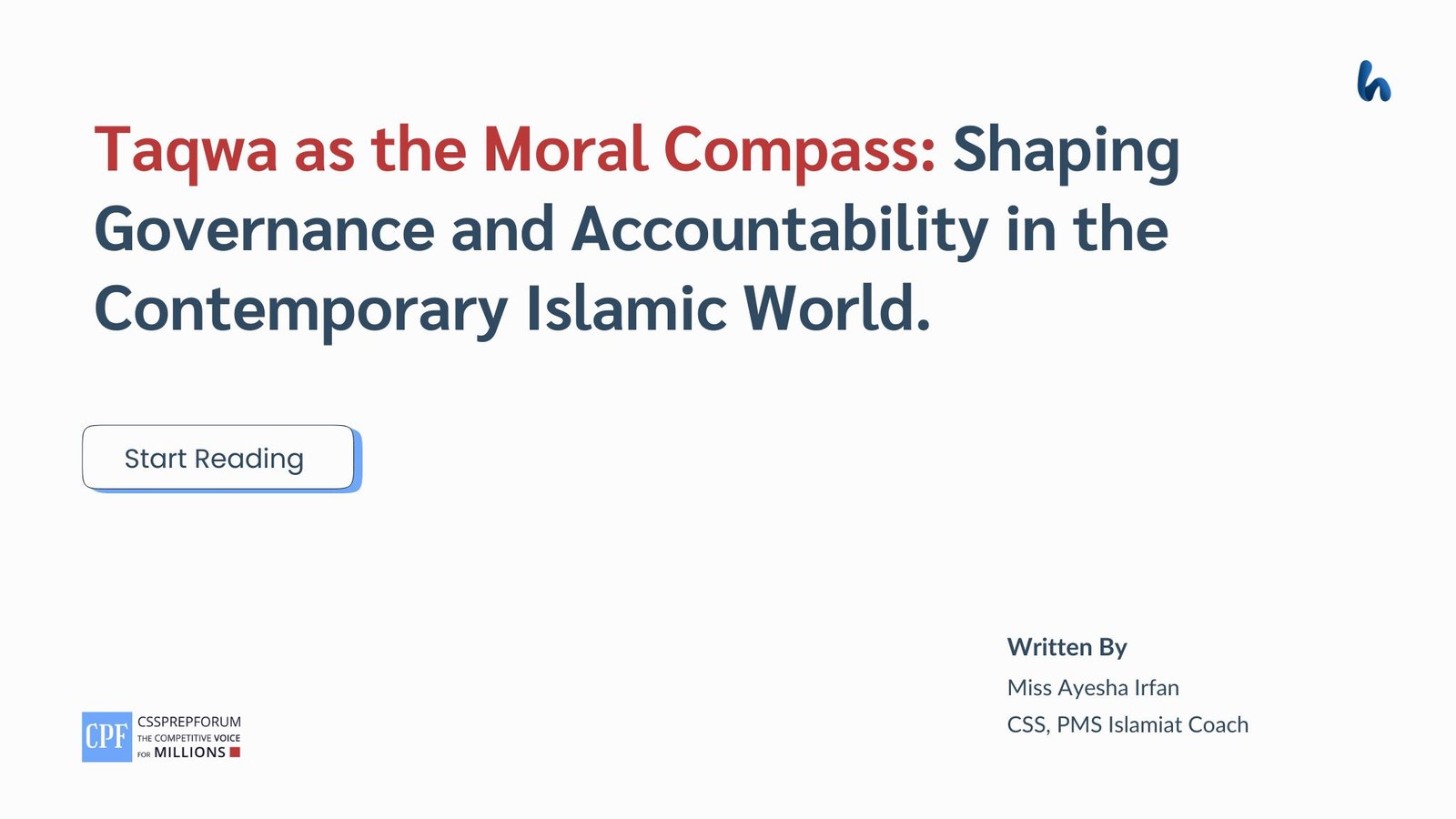CSS 2014 Solved Current Affairs Past Papers | Impacts of AFPAK Policy on Pak-US Relations
The following question of CSS Current Affairs 2014 is solved by Sir Ammar Hashmi, the best Current Affairs Coach, on the guided pattern of Sir Syed Kazim Ali, which he taught to his students, scoring the highest marks in compulsory subjects for years. This solved past paper question is uploaded to help aspirants understand how to crack a topic or question, how to write relevantly, what coherence is, and how to include and connect ideas, opinions, and suggestions to score the maximum.

Question Breakdown
This question has one part in which we are supposed to discuss the impact of the AFPAK policy on Pak-US relations
Outline
1-Introduction
2-Understanding AFPAK Policy
3-Impact of the AFPAK Policy on Pak-US Relations
- ✓Economic Impacts
- Aid and financial assistance provided to Pakistan under the policy
- Changes in trade relations and economic dependencies
- Influence on Pakistan’s domestic economic policies
- ✓Military Impacts
- US military cooperation with Pakistan
- Impact of drone strikes and counterterrorism operations
- Shifts in Pakistan’s military alignment and defence strategy
- ✓Geostrategic Impacts
- Pakistan’s role in the US-led War on Terror
- Impact on Pakistan’s relations with regional actors (Afghanistan, India, China)
- Influence on US strategic interests in South Asia
4-Critical Analysis
5-Conclusion

Answer to the Question
Introduction
To confront the detailed security challenges in Afghanistan and Pakistan and to stabilize the area while neutralizing extremist organizations, the United States initiated the AFPAK policy. The AFPAK policy substantially affected the economic, military, and geostrategic relationship between the United States and Pakistan. The economic narrative of U.S.-Pakistan relations before the AFPAK policy featured a sequence of cooperation and tension cycles dictated by security concerns and influenced by the levels of U.S. financial resources. According to the AFPAK policy, Pakistan received more excellent U.S. financial support, which resulted in economic reliance and influenced several of the country’s economic policies. The military wing of the relationship saw increased military cooperation in counterterrorism operations because of the policy. However, it also provoked serious concerns over national sovereignty, highlighted by Pakistan’s response to the U.S. drone strikes. The AFPAK policy has redefined Pakistan’s function in the War on Terror and has modified its associations with several primary regional and global powers, including Afghanistan, India, and China; these changes have had a significant impact on the balance of power in southern Asia. In short, the AFPAK policy was of great importance for Pak-US relations since it made clear the growing reliance of Pakistan on the United States for security, as well as the increasing reliance of the United States on Pakistan. The AFPAK policy has given many opportunities and difficulties for Pak-US relations, which are still defining their relations.
Understanding AFPAK Policy
The AFPAK policy, introduced during the Obama administration in 2009, was an optimal policy that was tailored to address the ruling security issues in Afghanistan and Pakistan, especially within the context of the War on Terrorism. The AFPAK was designed this way because the fighting is joined, and the extremism is cross-border with the Taliban and Al-Qaeda in both Afghanistan and Pakistan. The policy’s centred views were to strengthen Pakistan’s commitment towards counterterrorism endeavours, dismantle the terrorists’ sanctuaries in Pakistan’s FATA region and stabilise Afghanistan. It focused on military, economic, and diplomatic approaches, including good governance, development partnerships, and security and defence cooperation. The policy was also accompanied by spectacles that were highly objectionable on sovereignty grounds, such as the use of drones targeting extremist leaders in Pakistan’s tribal areas. AFPAK was at the centre of the broader US counterterrorism and regional security strategies because it understood the mutual dependency for stability in Afghanistan and Pakistan, thus representing a shift in US policy. However, the efficiency of this agreement created rather complicated interaction patterns between Pakistan and the United States; it predetermined further shifts in regional geopolitics, economically linked relations and military partnership.
Impact of the AFPAK Policy on Pak-US Relations
- ✓ Economic Impacts
The AFPAK policy had a substantial economic impact on Pak-US relations, primarily through increased financial aid and assistance to Pakistan. On paper, from 2009 to 2012, Pakistan was given $7.5 billion in US civilian aid and support through the Kerry Lugar Berman Act to stabilise the Pakistani state and economy. The significant assistance resulted in the growth of social sectors, including health and social education. Still, at the same time, it limited Pakistan’s economic sovereignty by continuing to rely on foreign aid. In exchange, Pakistan had to coordinate its economic policies with those of the United States and embark upon governance reforms, which would signify surrendering its economic sovereignty. For instance, Pakistan was forced to redirect funds from other internal requirements in its war on terror. In addition, the aid agreements had trade implications because one could not engage the United States in economic cooperation without a security partnership. Nevertheless, using financial help from America made Pakistan even more enmeshed and vulnerable to an economic squeeze. The policy decisions mainly had American concerns in their structure; frequent shifts in political bearings, parallel to the conditional flow of economic help, placed Pakistan’s economic initiatives exclusively under a bilateral relationship with the United States of America. For instance, military aid was cut in 2011 after US forces found the location of Osama Bin Laden. In the long run, the ‘war on terror’ aid dependence flawed Pakistan’s sovereign economic policy framework irreparably. In the short run, the AFPAK policy gave brief moments on economic and political crises when security payments were highest in certain years. However, economic interdependence growth negatively affected the relationship between the United States and Pakistan in the long run.
- ✓ Military Impacts
While the economic impacts of the AFPAK policy created financial dependencies, the military dimension of the policy further deepened the complexities of Pak-US relations. Consequently, as Pakistan metamorphosed into an increasingly valuable ally in the war, militarization was promoted, and the US contributed towards hugely enhancing Pakistan’s military. Between 2009 and 2016, the US provided more than $13 billion in security aid to Pakistan, including support in procuring equipment and hardware, capacity building and Counter-Terrorism operations. Engagement, though, brought along its issue, probably the most prominent being the issue of Pakistan’s sovereignty. Excluding US soldiers and drones flying overhead, the attacks launched by US drones against the Pakistani tribal zones hit a sensitive cord. From 2004 up to 2018, almost 400 US drone strikes took place in Pakistan, leaving several thousand dead, many of them civilians. The drone strikes targeted the terrorist areas but increased the anti-American sentiment in Pakistan and provoked very high protests and political opposition. These reactions were precipitated, in part, by the strikes because they appeared to violate Pakistani territorial integrity. Opposition to foreign boots and drone strikes significantly would also influence Pakistan’s military dealings with the US beyond the near-term indignation. US military assistance augmented Pakistani capacities to act and react, to some extent obliging Pakistan to reorient some of the new capacity to do things that the US expected, sometimes notwithstanding the potential adverse impact on Pakistan’s interests and security in South Asia. While the dependence arose, it set a natural path of dependency whereby semi-regular drone strikes were put down the dotted line as reliance on the US military security system increased. The sting of the drone, lack of consultation, and the need to shut down bases in Pakistan when ‘table manners’ in Washington failed – each of these altogether contributed to the downward trend indicated by the dotted line in the graph on military relations between Pakistan &USA as part of the AFPAK policy trajectory.
- ✓ Geostrategic Impacts
Besides the military and financial impacts, the AFPAK program has significant geostrategic implications for Pakistan and relations between the United States and Pakistani as well as other countries in the region. The part that Pakistan had in the war on terror under the American leadership stretched its importance quite significantly. However, when addressing the rapid changes in its role as a participant in counterterrorism strategy, the position of Pakistan in South Asia has been reconstructed by using its partnership with the US. However, gaining this kind of success means losing the link with the regional region. This role of Pakistan in US operations in Afghanistan, including logistical supply and permitting the use of its territory by the latter, led to the worsening of relations between India and Pakistan, as the cooperation between US Democrats reinforced such concerns in New Delhi about Pakistan’s military ability. On the flip side, in a bid to decouple the US influence, Pakistan’s relations with China were secret as Pakistan attempted to get closer to Beijing. Nevertheless, it was evident from China’s increasing investment in Pakistan, primarily through the CPEC, that China allowed Pakistan to remain relevant by funding it through the US. Swinging further, the AFPAK strategy shifted regional dynamics. It forced Pakistan to balance compliance with US security needs and keep its strategic interests by strengthening itself enough to counterbalance the others in the region. Consequently, the strategy has placed Pakistan in the geopolitical middle of the balancing, where its ally is persistently being tested with the US and its proximate neighbours.
Critical analysis
To critically analyse, although the policy was to stabilize Afghanistan and Pakistan, the cooperation and conflict have enmeshed in Pak-US relations. On the economic front, the massive American assistance to Pakistan temporarily might have helped meet some of its acute requirements but, at the same time, increased Pakistan’s structural vulnerability to the U.S. and restricted the country’s ability to exercise sovereign economic decision-making. As the aid was conditioned on Pakistan’s cooperation with the United States on counterterrorism, this assistance essentially censored Pakistani policymakers when their national interests differed from those of the United States. From a military point of view, Pakistan emerged to be the key ally of the United States in the War on Terror. Instead, Pakistan got a large amount of military aid but suffered from constant sovereign drone attacks that resulted in massive civilian casualties and increased the population’s radicalization level. All such strikes questioned Pakistan’s sovereignty and further stretched the era of mistrust and distrust between the two nations, thus resulting in the mistrust spiral. In geopolitical terms, the AFPAK policy underscored Pakistan’s utility to the United States. It secured a certain degree of leverage on American policy while compounding Pakistan’s problems with Afghanistan and India. This geopolitical catch indeed played into Pakistan’s hands, further solidifying its relations with China. They are not very sensitive to whether America likes it or not, while on the other hand, pushing Pakistan more into the trap of subjugating its foreign policy to another country and angering the United States. Regarding the new balance of power, Pakistan had to maintain relations with various regional states. However, what the AFPAK policy pursued as a policy of security and cooperation produced as a legacy of the relationship was the atrophy of the relationship, which increased reliance on the U.S. and the solidification of distrust. Regarding the security lessons of the War on Terror, it is still uncertain whether mutual trust between the two nations would improve.
Conclusion
To conclude, the AFPAK strategy has significantly shaped the Pakistan–U.S. relationship dynamics. In recent years, it has produced a synergy of cooperation clashes. It included providing economic aid and support for the military in Pakistan. However, at the same time, it also included the enlargement of Pakistan’s dependence on American economic and strategic support, which meant specific accountability regarding sovereignty over some sectors of Pakistan was taken away from the local authority. They assert that aspects of cooperation, specifically in military cooperation, for instance, in the fight against terrorism, suffered greatly from concerns such as drone strikes and, therefore, had led to diplomatic breakdown. Pakistan finds itself in a hazardous territorial location, having to bargain between its American friends and the Chinese neighbours. The consequences of the AFPAK strategy are decidedly mixed. It added and enlarged Pakistan’s part in counterterrorism and simultaneously created long-standing diplomatic and geo-political challenges. As they look to the future, both countries would have to close the trust gap and transition to a different type of relationship that would be more balanced, but perhaps less friendly, toward a more stable, if not necessarily a warmer, modality of a relationship.
CSS Solved Past Papers’ Essays
Looking for the last ten years of CSS and PMS Solved Essays and want to know how Sir Kazim’s students write and score the highest marks in the essays’ papers? Then, click on the CSS Solved Essays to start reading them.
CSS Solved Essays
CSS Solved General Science & Ability Past Papers
Want to read the last ten years’ General Science & Ability Solved Past Papers to learn how to attempt them and to score high? Let’s click on the link below to read them all freely. All past papers have been solved by Pakistan’s top CSS GSA coach having the highest score of their students.
General Science & Ability Solved Past Pape












